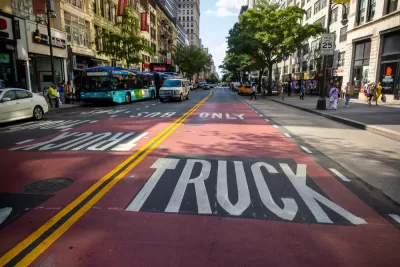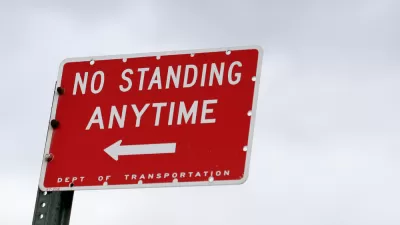Predictions of carmageddon have not come to pass after New York City blocked most car traffic of a section of 14th Street in Manhattan to make way for buses.

The initial reviews of the new bus priority on 14th Street in Manhattan were positive, but there was a sense that many writers in New York were waiting until the dust settled on an controversial and innovative new street configuration that made its debut on October 3, 2019.
An article written by Gina Bellafante for the New York Times and published over the weekend takes a more definitive stance: 14th Street is a huge success that should be duplicated elsewhere in the city.
Recently, I wandered around the vicinity of 14th Street and encountered a quiet that was almost eerie. I was unnervingly reminded of the days after 9/11, when cars were prohibited from making their way downtown. No one going to Cafe Cluny (on the corner of West 12th and West Fourth Streets) would have heard a single honking horn.
The relative silence was the result of the city’s recent decision to ban most cars from 14th Street. As transportation analysts had predicted all along, traffic doesn’t necessarily reroute itself when cars are pulled off certain roads. It almost starts to disappear.
The project is notable because it was delayed by lawsuits that predicted just the opposite scenario on streets in the vicinity of 14th Street would come true.
Bellafante also notes that side streets aren't the only beneficiary of the new arrangement. 14th Street itself is also transformed:
Initial data indicate that the buses, previously some of the slowest in the city but now, free of so much competition, have become much faster. An M14 bus trip that typically took 30 minutes now is taking about 21 minutes. One morning this week, a bus was so ahead of schedule that it had to stop at an intersection and pass the time so it wouldn’t get too ahead of itself.
Bellafante is also willing to test the waters on the idea of expanding the pilot project to more streets. "Imagine 42nd Street without traffic," for instance.
FULL STORY: Cars Were Banned on 14th Street. The Apocalypse Did Not Come.

Manufactured Crisis: Losing the Nation’s Largest Source of Unsubsidized Affordable Housing
Manufactured housing communities have long been an affordable housing option for millions of people living in the U.S., but that affordability is disappearing rapidly. How did we get here?

Americans May Be Stuck — But Why?
Americans are moving a lot less than they once did, and that is a problem. While Yoni Applebaum, in his highly-publicized article Stuck, gets the reasons badly wrong, it's still important to ask: why are we moving so much less than before?

Research Shows More Roads = More Driving
A national study shows, once again, that increasing road supply induces additional vehicle travel, particularly over the long run.

Judge Halts Enforcement of Anti-Homeless Laws in Grants Pass
The Oregon city will be barred from enforcing two ordinances that prosecute unhoused residents until it increases capacity and accessibility at designated camping sites.

Advancing Sustainability in Los Angeles County Schools
The Los Angeles County Office of Education’s Green Schools Symposium brings together educators, students, and experts to advance sustainability in schools through innovative design, climate resilience strategies, and collaborative learning.

Using Old Oil and Gas Wells for Green Energy Storage
Penn State researchers have found that repurposing abandoned oil and gas wells for geothermal-assisted compressed-air energy storage can boost efficiency, reduce environmental risks, and support clean energy and job transitions.
Urban Design for Planners 1: Software Tools
This six-course series explores essential urban design concepts using open source software and equips planners with the tools they need to participate fully in the urban design process.
Planning for Universal Design
Learn the tools for implementing Universal Design in planning regulations.
City of Moreno Valley
Institute for Housing and Urban Development Studies (IHS)
City of Grandview
Harvard GSD Executive Education
NYU Wagner Graduate School of Public Service
City of Cambridge, Maryland
Newport County Development Council: Connect Greater Newport





























